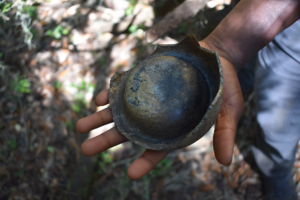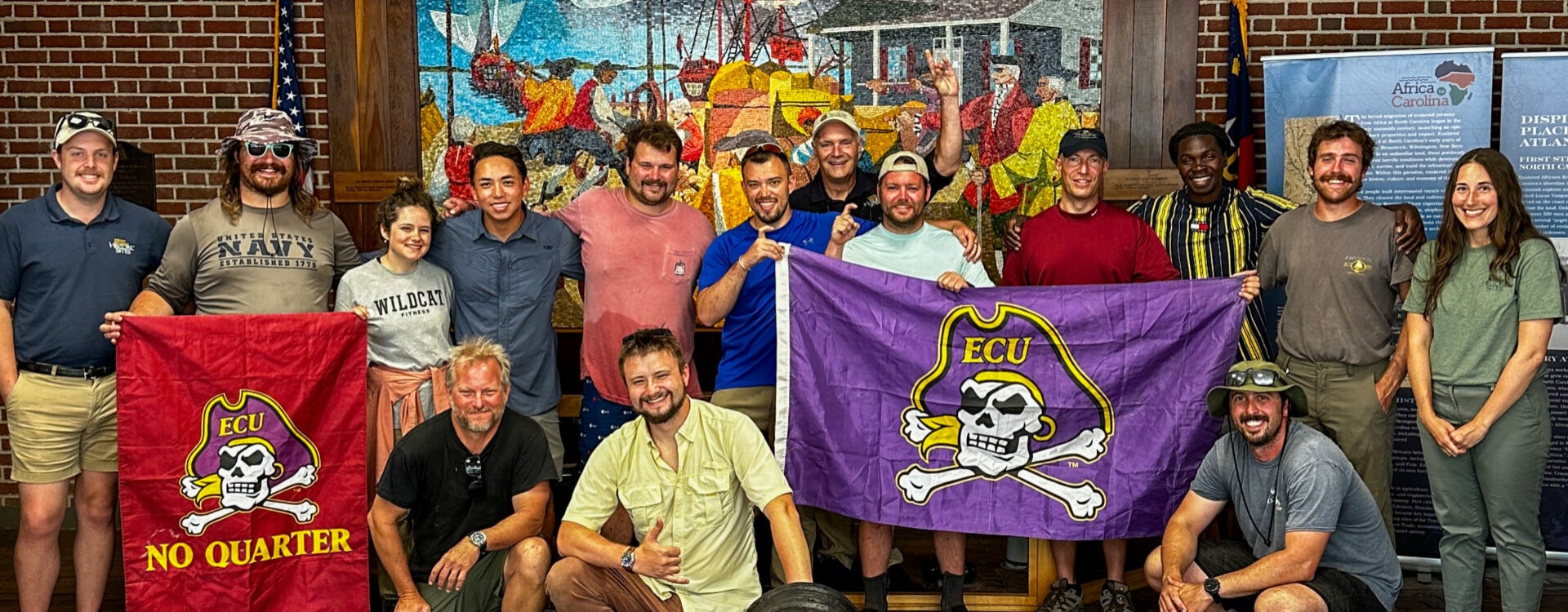Summer Field School 2024: Coastal NC
The Program in Maritime Studies held its summer 2024 field school in two areas of coastal North Carolina: Edenton Harbor on the Albemarle Sound and Brunswick Town/Fort Anderson State Historic Site along the Lower Cape Fear River. MA in Maritime Studies graduate students were introduced to a suite of non-disturbance terrestrial and underwater archaeological methods to document submerged and intertidal sites at each location.
Edenton, NC
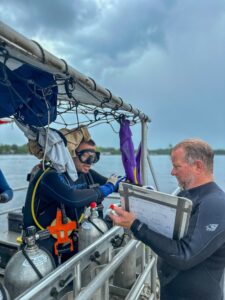 The work in Edenton focused on revisiting the interpretation of the John’s Island Wreck (Askins-Neidinger 2000), an 18th century shipwreck in Edenton Harbor, using new historical and archaeological research. The John’s Island Wreck was one of the first sites investigated by ECU Maritime Studies in 1980, and was excavated by ECU in 1994. Using site plans derived from both of these previous studies, the research team in 2024 spent two weeks mapping the site to document any changes to the structure in the last twenty years. Results from this study of the shipwreck will be part of a graduate student thesis (forthcoming). In addition to the work on the John’s Island Wreck, students were given side projects at various locations around the Historic Downtown Edenton Waterfront to investigate further. Some of these sites were identified from UAB records, and others from community recommendations during an outreach event held in the first week of the project. Sites included the waterfront cannon on display, the Branning Manufacturing Mill, Hayes Plantation, the Homestead property, and the Queen Anne’s Creek Shipwreck.
The work in Edenton focused on revisiting the interpretation of the John’s Island Wreck (Askins-Neidinger 2000), an 18th century shipwreck in Edenton Harbor, using new historical and archaeological research. The John’s Island Wreck was one of the first sites investigated by ECU Maritime Studies in 1980, and was excavated by ECU in 1994. Using site plans derived from both of these previous studies, the research team in 2024 spent two weeks mapping the site to document any changes to the structure in the last twenty years. Results from this study of the shipwreck will be part of a graduate student thesis (forthcoming). In addition to the work on the John’s Island Wreck, students were given side projects at various locations around the Historic Downtown Edenton Waterfront to investigate further. Some of these sites were identified from UAB records, and others from community recommendations during an outreach event held in the first week of the project. Sites included the waterfront cannon on display, the Branning Manufacturing Mill, Hayes Plantation, the Homestead property, and the Queen Anne’s Creek Shipwreck.
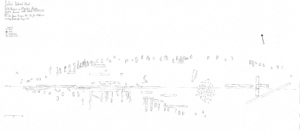
Site plan of the John’s Island Shipwreck (2024).
Brunswick Town/Fort Anderson Historic Site
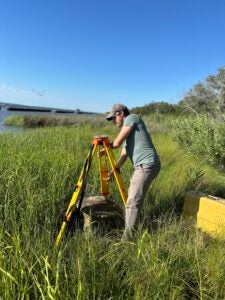 For the final week of field school, faculty, staff and students traveled to Brunswick Town/Fort Anderson Historic Site to investigate submerged sites located by ECU personnel during a side scan sonar survey in 2021. This work focused primarily on the southern waterfront including the submerged bottomlands, coastal marsh, and terrestrial waterfront lots associated with the 18th century port town in the uninterpreted wooded area of the historic site. Graduate students mapped three (3) 18th century timber-crib wharves and their associated ballast fill along with the shoreline erosion occurring on the marsh using an RTK GNSS. The team found numerous diagnostic artifacts in the wharf fill that are currently being conserved in the QAR Conservation Lab in Greenville, NC. In addition to this in-water work, students also identified and completed preliminary documentation of five structures on waterfront lots, and documented the cannon dredged from the river in 2016.
For the final week of field school, faculty, staff and students traveled to Brunswick Town/Fort Anderson Historic Site to investigate submerged sites located by ECU personnel during a side scan sonar survey in 2021. This work focused primarily on the southern waterfront including the submerged bottomlands, coastal marsh, and terrestrial waterfront lots associated with the 18th century port town in the uninterpreted wooded area of the historic site. Graduate students mapped three (3) 18th century timber-crib wharves and their associated ballast fill along with the shoreline erosion occurring on the marsh using an RTK GNSS. The team found numerous diagnostic artifacts in the wharf fill that are currently being conserved in the QAR Conservation Lab in Greenville, NC. In addition to this in-water work, students also identified and completed preliminary documentation of five structures on waterfront lots, and documented the cannon dredged from the river in 2016.
